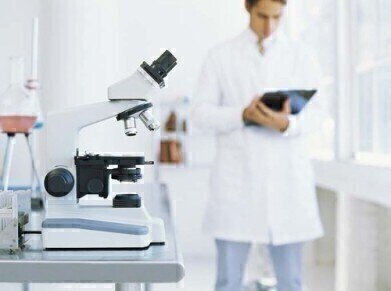HPLC, UHPLC
The Basics of Mobile Phase Degassing
Aug 26 2014
The presence of air bubbles in the mobile phase of a liquid chromatography (LC) system can lead to a range of complications. For example, if the piston chamber becomes filled with air or the valve functions cannot be properly checked due to the presence of unwanted air, pumping reliability will be severely compromised. To prevent bubble formation, the mobile phase should be degassed. Generally an in-line degasser is the first choice, but sparging with helium can be an alternative if the mobile phase does not contain any volatile components. If air bubbles pass through the detector, then spurious peaks will be produced which will greatly affect the integrity of the results. For more information on why bubbles are a problem, check out the article: What is Mobile Phase Degassing?
Degassing Methods
Luckily, degassing does not need to remove all of the excess dissolved air from a solvent for it to be effective. In fact, only enough has to be removed so that the level of gas in the mobile phase is less than the saturation level. This is normally around half of the gas present, which makes the process a relatively simple one. The four main methods of degassing are refluxing, helium sparging, vacuum degassing and sonication.
Refluxing
This is the most effective method of degassing, but unfortunately it is also the most difficult and the least practical as it involves boiling the solvent and distilling the gas. Because of its impracticality, this method is rarely used, although it yields near-perfect results.
Helium Sparging
This is a very effective and efficient method of degassing, which will remove more than 80% of dissolved gases and requires only one litre of helium to sparge the equivalent amount of mobile phase. However, prolonged sparging leads to distorted results, since some of the solution will inevitably evaporate in the process. As such, it is best only to use this method of degassing for a few minutes at a time.
Vacuum Degassing
Vacuum degassing can be achieved either by filtration prior to the LC process (the least effective method), via a batch-wise process treating the mobile phase itself (the most common method) or via on-line vacuuming, which utilises thin-walled porous tubing to permit vacuuming as part of the LC process itself (the most effective but most expensive method). In fact, as on-line vacuum degassing gains popularity, many LC system manufacturers are including vacuum degassing as a standard component of their LC system.
As a general rule, vacuum degassing normally removes about 60% of unwanted dissolved gases, making it an effective method of degassing for most LC techniques.
Sonication
Ultra-sonic baths is not a viable standalone degassing method, since they can only remove about 30% of the dissolved gas present and at least 50% is required. However, when used in conjunction with either helium sparging or vacuum degassing, sonication is a useful method.
Digital Edition
Chromatography Today - Buyers' Guide 2022
October 2023
In This Edition Modern & Practical Applications - Accelerating ADC Development with Mass Spectrometry - Implementing High-Resolution Ion Mobility into Peptide Mapping Workflows Chromatogr...
View all digital editions
Events
Apr 28 2024 Montreal, Quebec, Canada
May 05 2024 Seville, Spain
May 15 2024 Birmingham, UK
May 19 2024 Brno, Czech Republic
May 21 2024 Lagos, Nigeria














